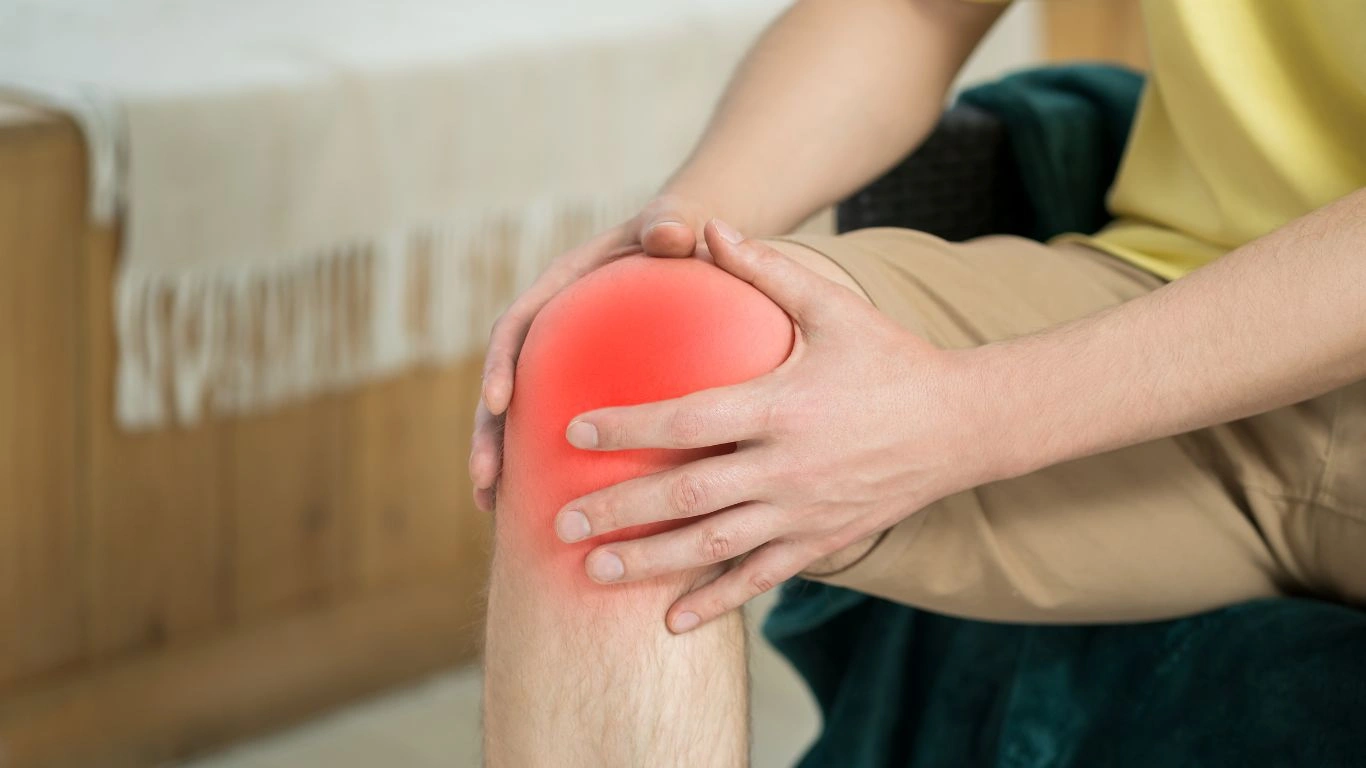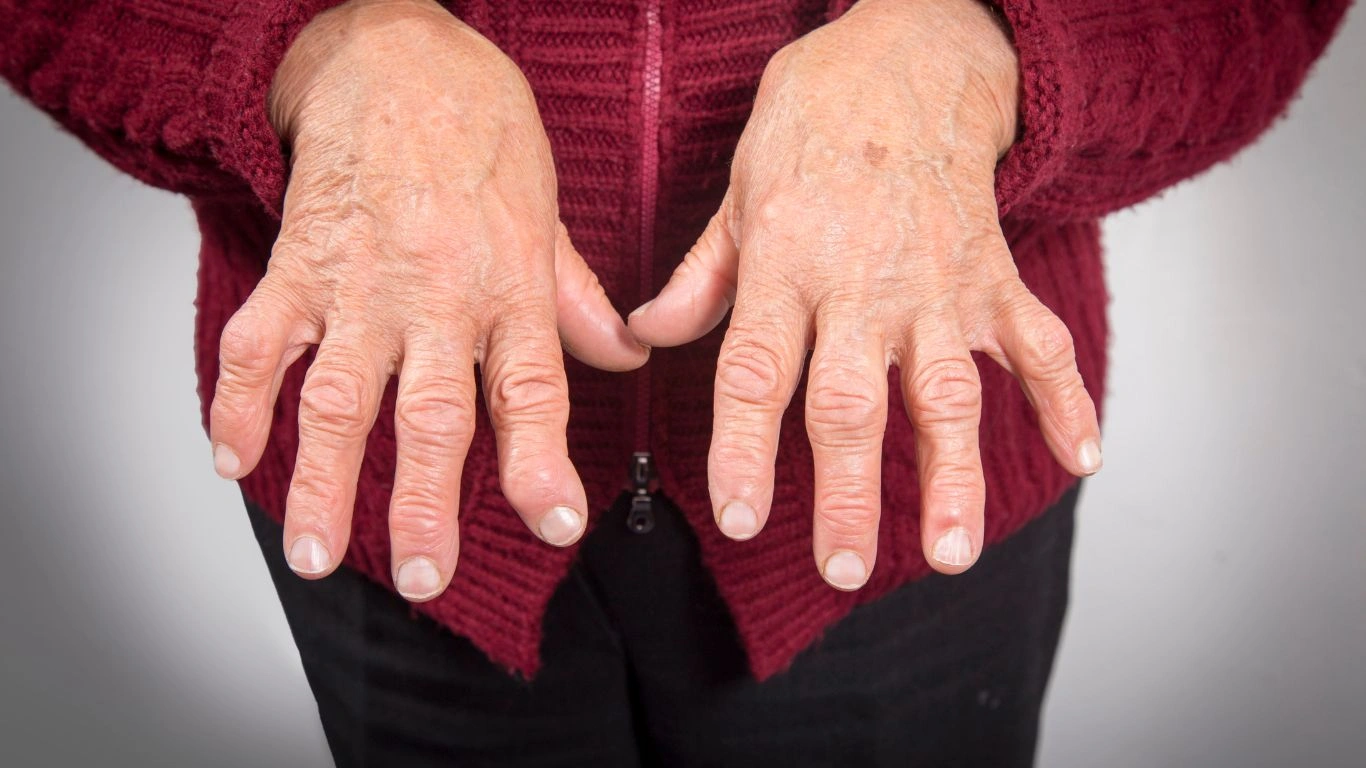Rheumatoid Arthritis and Cold Weather ❄️: Why Winter Feels Like a Battle for Your Joints
Okay, let’s talk about something we’ve all experienced: cold weather and how it just does something to our joints—especially if you have rheumatoid arthritis (RA). If you’re nodding along, I hear you! I know firsthand how much harder it is to move around when the weather drops. The stiffness, the aching… it can feel like the cold is out to get you. But here’s the deal—there’s actually a reason for all of this. So grab a warm drink, and let’s break it down.
So, What’s Up with Rheumatoid Arthritis and the Cold?

What is RA Anyway?
Let’s keep it simple: rheumatoid arthritis is when your immune system goes rogue and attacks the lining of your joints, causing swelling, pain, and over time, joint damage. It’s one of those “invisible” conditions that a lot of people don’t fully get—like, you look fine on the outside, but inside your joints? Yeah, they’re not so happy.
When it comes to cold weather, though, it seems like RA goes into overdrive. You might notice more stiffness, more swelling, and just more pain in general. Trust me, I get it. 😩
Why Does Cold Weather Make RA Worse?
- Cold Tightens You Up: When the temperature drops, blood flow to your joints can decrease, making them feel stiffer. And when your joints are already inflamed, that means more discomfort.
- Barometric Pressure: Yep, it sounds fancy, but it basically means the pressure in the air drops when it’s cold (think winter storms). This change can make the tissue around your joints swell, causing pain.
- Less Movement: Cold weather makes us want to hibernate, right? But the thing is, staying still for too long only worsens RA. Joints need movement to stay loose, and when you’re bundled up and not doing much, you might feel even worse.
Troubleshooting Common Issues with RA in Winter

Okay, so we know cold weather can be a pain. But that doesn’t mean we’re stuck with a miserable winter. There are a few things that can seriously help with managing RA when it’s chilly out.
1. Bundle Up, Seriously 🧣
I’m talking about layering. Don’t just throw on a jacket—add extra layers, like scarves, gloves, and socks that really keep the warmth in. A good pair of heated gloves or compression socks can work wonders. I remember last winter, I was constantly battling icy winds, and I swear those heated mittens saved my hands. Game changer.
2. Keep Moving, Even When It’s Cold ❄️
I know it’s tempting to curl up on the couch and binge-watch Netflix, but moving is so important. I’ve found that just doing simple stretches or even a 15-minute walk can help keep my joints from feeling stiff. You don’t have to go overboard—just stay active enough to get the blood flowing.
3. Hot Baths & Heating Pads 🔥
Honestly, a hot bath when my joints are feeling tight is heaven. If that’s not your thing, a good old heating pad will do the trick. I love putting it on my back when my joints are acting up—it’s like a mini spa day right at home. Plus, heat is so soothing for aching joints. Don’t knock it until you try it.
4. Eating the Right Foods 🍏
Okay, let’s talk food for a sec. I know we all have our comfort food cravings in winter (hello, hot cocoa), but eating foods that fight inflammation can really make a difference. I’ve been trying to add more fatty fish (like salmon) and nuts to my diet, and I swear, I notice the difference in my joints. Fish oil supplements are another thing I’ve heard people swear by for helping with RA, especially in the winter months.
5. Stay Hydrated 💧
Winter air can be so drying, and it’s easy to forget to drink enough water. But dehydration can make your joints feel worse, so keep a water bottle with you and sip throughout the day. I know it sounds basic, but it really does help.
Real Stories: How Others Manage RA During Winter

Sarah’s Secret to Beating Winter RA
Sarah, a good friend of mine with RA, used to dread the cold months. Her hands would get so stiff that holding a coffee cup was a challenge! But after she started using heat pads on her wrists and elbows at night, she noticed a big improvement. She also swears by walking around the block daily (even if it’s just for a few minutes), and it makes a huge difference for her. It’s not a miracle cure, but it keeps her moving and helps with the stiffness.
Mark’s Winter RA Diet Boost
Mark has RA too, and he says his joints flare up a lot when the temperature drops. He’s been focusing on eating more anti-inflammatory foods like leafy greens and fatty fish. He says that ever since he switched up his diet, his symptoms have been more manageable, and he feels less stiff overall. He also made a habit of drinking ginger tea, which he finds soothing for his joints in winter.
Key Takeaways / Summary

- Cold weather tends to make rheumatoid arthritis worse due to tighter blood flow, barometric pressure changes, and the urge to stay inactive.
- To manage it, focus on staying warm, moving regularly, eating anti-inflammatory foods, and staying hydrated.
- Don’t be afraid to try new things, like heating pads, warm baths, or compression gloves—they can really help!
- Real people (like Sarah and Mark) are finding success with simple changes like stretching, walking, and eating better. It’s all about trial and error.
FAQs About RA and Cold Weather
Does cold weather make RA worse?
Yeah, it can. Cold temperatures can make your joints feel stiffer and more painful due to decreased blood flow and other factors.
What’s the best way to relieve joint pain in winter?
Keeping warm, using heat therapy (like a heating pad), staying active, and eating anti-inflammatory foods are all key strategies.
Can I still exercise with RA in winter?
Absolutely! Just take it easy and do low-impact activities, like walking or stretching. Don’t overdo it—listen to your body.
Are there foods I should avoid?
Yes—try to limit processed foods, sugars, and trans fats. Stick to anti-inflammatory options like leafy greens, berries, and fish.
Should I take supplements for RA in the winter?
Supplements like fish oil or vitamin D can help reduce inflammation, but always talk to your doctor first before adding anything new to your routine.
References
Rheumatoid Arthritis Foundation
Mayo Clinic
Arthritis Foundation
Disclaimer
This blog post is meant for general informational purposes and is not a substitute for professional medical advice. Please talk to your doctor before making any major changes to your treatment or lifestyle.
Call to Action
If you’ve been feeling the effects of winter on your joints, don’t just suffer through it! Try some of these tips to keep your RA symptoms at bay. And always remember, you’re not alone in this. Take control of your health and make the cold months more manageable. 💪

Tarra Nugroho is a dedicated Nurse Practitioner with a strong foundation in family and preventive care. She brings both compassion and clinical expertise to her practice, focusing on patient-centered care and health education. As a contributor to Healthusias.com, Tarra translates medical knowledge into clear, empowering articles on topics like women’s health, chronic disease management, and lifestyle medicine. Her mission is simple: help people feel seen, heard, and informed—both in the clinic and through the content she creates. When she’s not caring for patients, Tarra enjoys weekend hikes, plant-based cooking, and curling up with a good health podcast.






